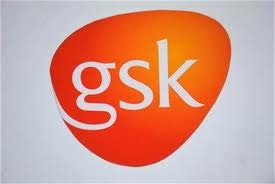Some of the best-performing stocks over the past several decades boast long histories of paying dividends to shareholders. Moreover, if these stocks sell for an apparent discount to their intrinsic values, they might deserve a place in your portfolio. In my opinion, GlaxoSmithKline plc (ADR) (NYSE:GSK) offers both great dividend growth and impressive value. Here’s why you may want to give this notable drugmaker a closer look.
Company Performance in Review
Glaxo is a UK-based, $109 billion pharmaceutical company with a broad array of products. The company operates through three segments: Pharmaceuticals, Vaccines, and Consumer Healthcare. Pharmaceutical products make up the bulk of Glaxo’s business, comprising 68% of the company’s sales. The Vaccines and Consumer Healthcare groups account for 13% and 19% of sales, respectively. Glaxo’s business is spread across the world. The United States provides the most business for the company, but Glaxo derives 68% of its sales from outside the U.S.

Going forward, Glaxo’s growth will be fueled by continued emerging market expansion. The company plans to continue building its emerging market segment to capitalize on growth in the developing international economies. This will be accomplished through a combination of organic investment as well as targeted bolt-on acquisitions.
Pfizer’s Pipeline Uncertainties
Pfizer announced solid full-year 2012 results. The company’s reported diluted earnings per share came in at $1.94. While the company is currently trading for a reasonable 14 times these earnings, full-year 2012 revenues declined 10%. Management blamed the loss of Lipitor for the bulk of the decline.
You might be concerned about Pfizer losing Lipitor, and for good reason. Lipitor accounted for $9.6 billion in sales for Pfizer in 2011, almost as much as the company’s next three best-selling products combined. The company will have to allocate significant resources if it wants to replace these lost sales, which will take a toll on the company’s bottom line going forward. Indeed, Pfizer is forecasting reported diluted earnings per share to be in a range of $1.50 to $1.65 for fiscal year 2013. As a result, the company is trading for more than 17 times the midpoint of its guided 2013 range.
Glaxo doesn’t have the same level of risk associated with its product pipeline. Although Glaxo’s Pharmaceuticals and Vaccines segment accounts for more than 60% of its sales, no one therapeutic area within that segment accounts for more than a third of its sales. Plainly stated, the company isn’t as reliant on one blockbuster drug as Pfizer was with Lipitor.
Eli Lilly’s Stalled Dividend
Meanwhile, Eli Lilly reported full-year 2012 revenues declined 7% year over year and earnings of $3.66 per share. Consequently, the stock now trades for a modest 15 times trailing earnings. While Eli Lilly’s share price has performed very well recently, increasing more than 20% in 2012, the company hasn’t provided investors with a dividend increase in almost three years. Because its stock price has risen so much over the last couple years, the yield is now down to 3.5% at recent prices. Going forward, management hasn’t provided guidance as to when the company will resume increasing its payout.
As opposed to Lilly’s inability to raise its dividend, Glaxo’s management remains steadfast in their commitment to increasing its payout. The company declared a fourth-quarter dividend higher than its quarterly payout last year. Glaxo’s four quarterly dividends in 2012 amounted to 74 pence versus 70 pence in 2011, an increase of more than 5% year over year. Since Glaxo’s stock price leveled off (the stock actually ended 2012 down slightly), new investors will enjoy a yield of more than 5% annualized.
The Foolish Bottom Line
Glaxo doesn’t have the pipeline problems that Pfizer has and also has a more shareholder-friendly dividend policy than Eli Lilly. While both Eli Lilly and Pfizer had great runs last year, their dividend yields now pale in comparison to Glaxo’s 5% yield.
Pharmaceutical companies like Glaxo provide products that customers can’t go without for very long. In addition, the company offers an industry (and market) beating dividend yield. To top it all off, the stock is trading for valuation multiples more attractive than the S&P 500. The company has all the makings of a highly rewarding long-term holding. Glaxo and its juicy dividend yield belong in many investors’ portfolios.
The article The Next Stock You Should Consider originally appeared on Fool.com and is written by Robert Ciura.
Copyright © 1995 – 2013 The Motley Fool, LLC. All rights reserved. The Motley Fool has a disclosure policy.




